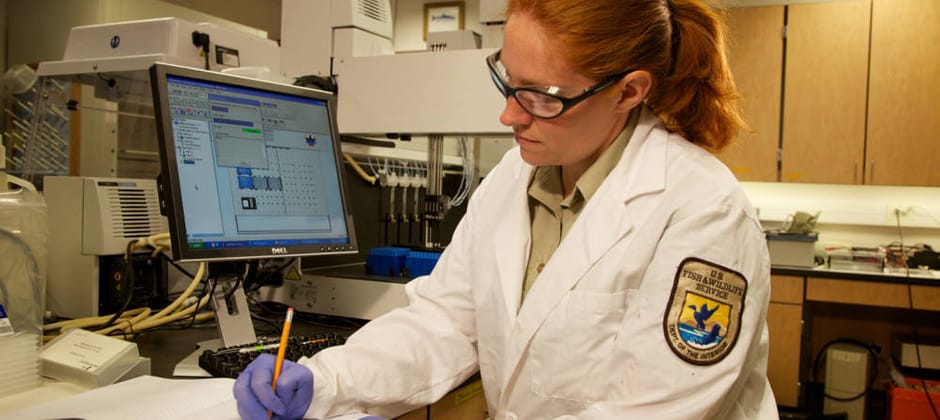Share this article
An adventure in molecular ecology
This article is part of a series focusing on topics addressed in upcoming TWS webinars. Hosted by TWS working groups, the monthly webinars engage wildlife professionals on a host of subjects relevant to their work. Learn more and register here.
If you were a fan of Choose Your Own Adventure books growing up, you know the format. Instead of a conventional storyline, these books let readers play an active role in the tale. Do you open the door or walk away? Enter the cave or stay outside?
That was the inspiration for the Molecular Ecology Working Group’s upcoming webinar, which takes place Thursday, June 10 from 2 to 3 p.m. Eastern Time.
“We’re all kind of webinarred and Zoomed to death,” said Kristin Brzeski, the working group’s chair, “so we wanted something that would be more interactive and fun.”
Molecular ecology can seem daunting, but it has important applications for both wildlife management and research. Emerging technology has made it an even more exciting and growing field. More and more managers and researchers are looking for partnerships with molecular ecologists to enhance their work, Brzeski said. Among the working group’s 86 members, many aren’t molecular biologists themselves. Instead, they’re researchers and managers interested in what the field can bring to their work, and they’re looking for connections to make it happen.
“No one should be intimidated,” she said. “It’s great to come to the table and say, ‘I don’t know how to do this, but I’m interested and want to partner.’ This is the place to do it. The thing to remember is, we’re all wildlife biologists. First and foremost, we’re interested in wildlife. That’s the common ground we all can come back to.”
The webinar will briefly showcase some of the working group members’ research and activities. It will also offer an overview of the most frequently asked wildlife genetics questions. Then, participants can select which topics and questions the panelists should discuss in detail, whether that’s environmental DNA and new other new biomonitoring techniques, disease tracking based on population identification or the use of “omics” — applications from genome research — in wildlife management.
“We thought, let’s have the audience drive where the discussion goes,” Brzeski said. The hope is for a wide-ranging discussion about how various aspects of the field can apply to wildlife conservation and management. The webinar will also introduce participants to the sorts of symposia the working group hosts throughout the year on a variety of technologies, techniques and applications.
“I have no doubt that something you do can be informed or improved on by molecular ecology,” Brzeski said.
Header Image:
A U.S. Fish and Wildlife Service Geneticist analyzes data in the agency’s Conservation Genetics Lab.
Credit: Ryan Hagerty








